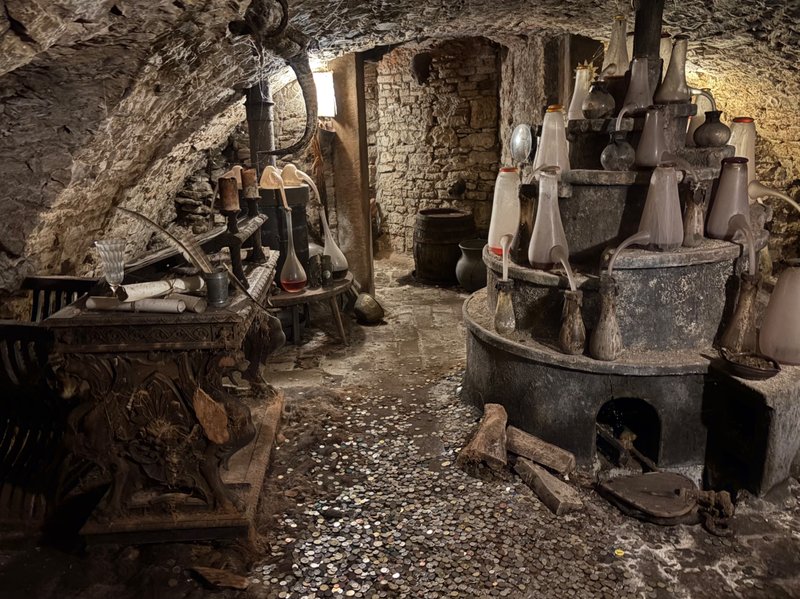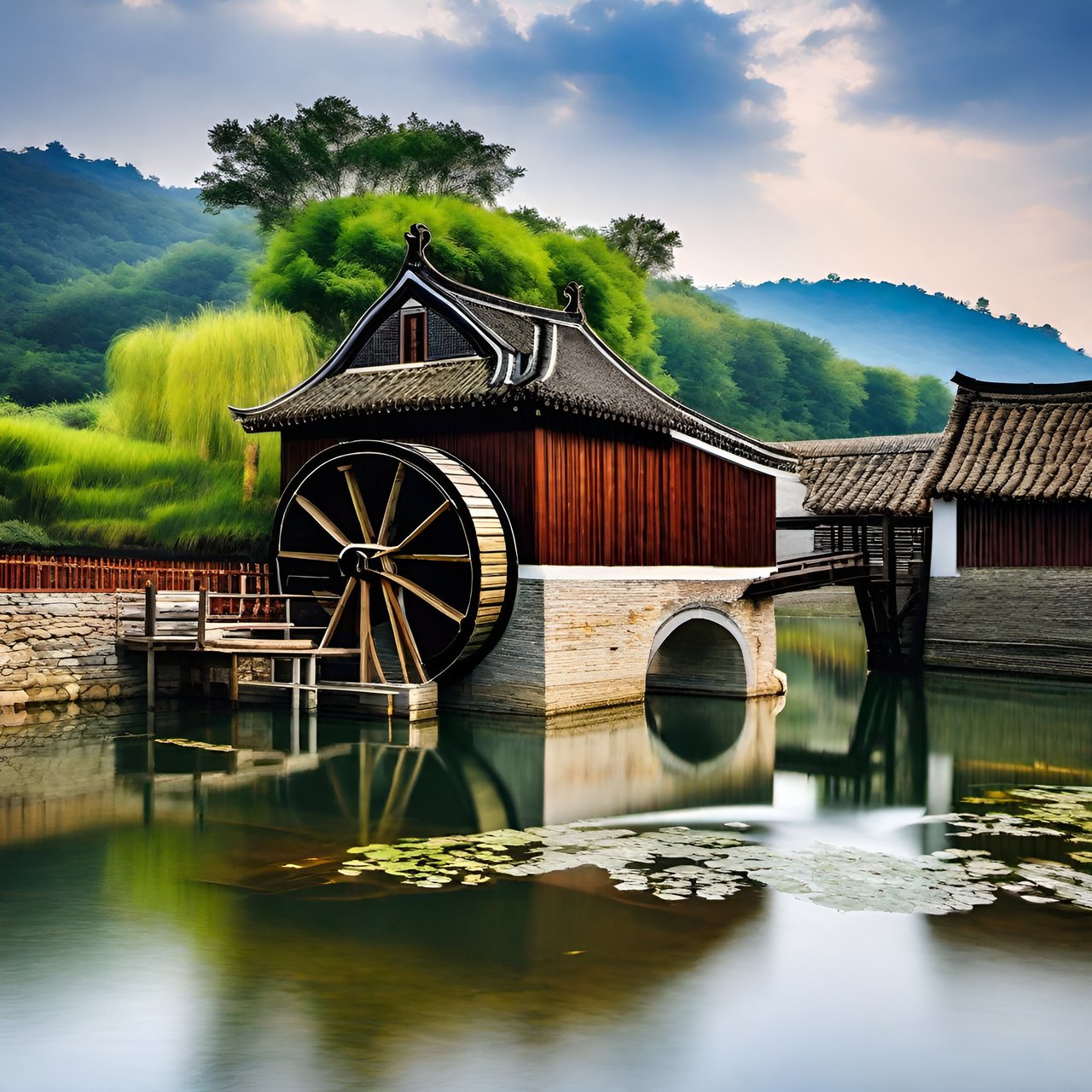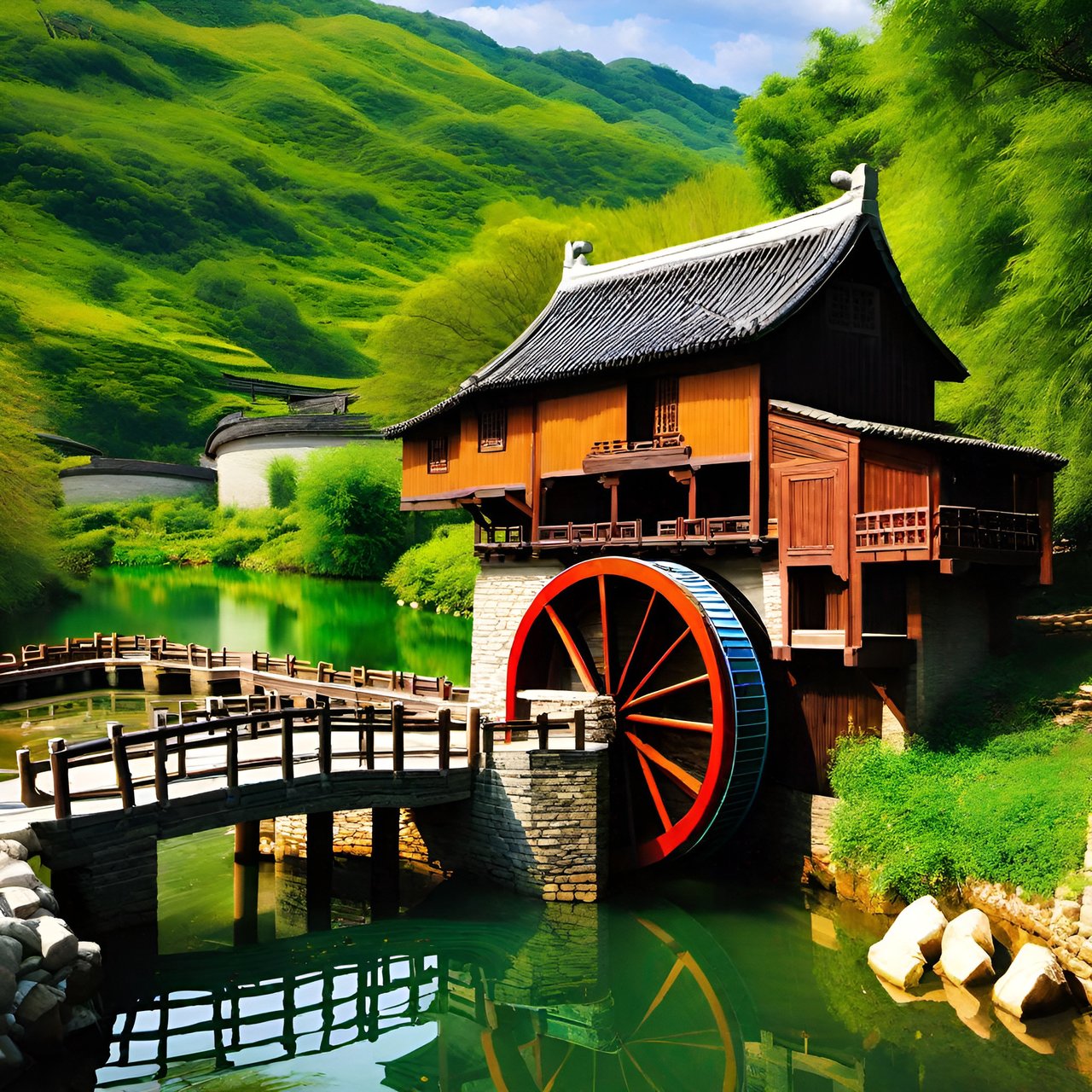History of Mills in China
5 comments
Good day dear Hive community, first of all I would like to welcome you all to my contribution and hope you had a day that has brought some positive experience into your life! In this post, I would like to address an important historical topic and hope you can learn something new.
Here are some artworks of mills that I created with the help of artificial intelligence and in this article I would like to specifically discuss the history of the mills in China. When there is the talk about mills, you probably first think of Europe, where the mills made a huge contribution to the development of the countries and also ancient China has a long culture of mills and there are some characteristics and technologies that are only known in ancient China and reflect the individuality of the different cultures. In the past, it was still a very hard task to crush raw materials and at that time the materials were still rubbed between stone until utensils such as the mortar mill were invented, which had made the work much easier. The traces of the first water mills in China can probably be traced back to the 3rd century BC where at that time was more worked with the help of water to make work easier and it is assumed that windmills were also used in China over 1500 years ago and there are numerous traces of murals as well as other old traditions that emphasize the importance. In China, they noticed early on what you could put things into operation with the help of wind and so it happened that in areas with strong wind conditions even entire infrastructures were supported with and some time later, wind was also combined with the mills. While more and more cereals were crushed in Europe, rice was one of the most important raw materials that had to be crushed in China and rice flour was of great importance for the production of bread. The windmills had an important meaning at that time and clearly distinguish themselves from the European ones by their appearance and also about age there are various speculations, there are even sources that assume that mills had already been operated there with the power of wind 3000 years ago.
It is suspected that one of the first dynasties that promoted the topic was the Han dynasty that revolutionized the old in China in many ways and, among other things, they were also known for improving the protective measures of China and at that time they worked a lot with the blacksmiths and ensured that many measures were taken in China to protect the population and for this, large parts of the country was upgraded and it needed more armor and other protective measures. The Han dynasty was one of the longest ruling dynasties and were known to expand their empire more and more, including their ever-growing demand for food, where the mills were of increasing importance. Until the mills more settled in the economic sector, it should still take some time and during the Ming Dynasty, more windmills were built and also used for other purposes such as the crushing of salt, stones or other things that were important for the infrastructure and more and more new techniques were developed to improve the functioning. This type of mill also played a very important role for the agricultural economy and there was often persistent drought in some regions and this is where the mills came into play to irrigate the agricultural land. The Ming dynasty still ruled until the 17th century and in the coming centuries, there were hundreds of thousands of different types of mills throughout China and until the middle of the 20th century, there was an ever-increasing industrialization in China and this ensured that there was a mill extinction like in Europe and the whole area was changed more and more. At the end of this post, I would like to link this post from me
where I have addressed this topic a little more and in genereal it can be said that China plays an important role when it comes to the development of the mills and if you are generally more interested in the topic, you will find more contributions .Thank you very much for taking the time to read through my post and I hope you like it and can learn something new about this important topic!







Comments